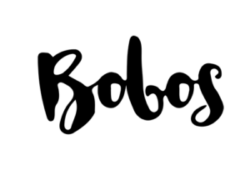
Credevo di aver sbagliato entrata perché appena passate le tende d’ingresso mi sono fermata a prendere una birra al bancone di un bar con il mio amico che mi accompagnava quella sera, e mi sono messa a chiacchierare con un gruppetto di ragazzi piuttosto strani che parlavano un inglese svelto e crudo. Uno di questi ragazzi strani poi si è messo a strimpellare i tasti di un pianoforte, ho girato lo sguardo e ho capito che non avevo affatto sbagliato. Era l’Economy Bar, una ricostruzione ampliata di quello che esisteva nello studio di Dieter Roth, e quella che mi apprestavo ad annusare e sbirciare era l’opera totale della sua storia, della sua vita, della sua arte. Per la prima volta in Italia sono state assemblate 100 opere di Roth (Hannover, 1930 – Basilea, 1998) in Hangar Bicocca, a Milano, con la curatela di Vicente Todolí, ex direttore della Tate Modern di Londra – insomma, c’è da fidarsi – che ha collaborato per l’installazione con il figlio Björn, Roth. Chi ci ha collaborato fianco a fianco, braccio a braccio, per un mese di montaggio – per i non addetti, moltissimo tempo – più di tutti è il project manager dell’Hangar che rivela che dopo il mal di testa della prima sera, ci si è fatta l’abitudine.

Cercare di raccontare di opere come una vita, e di una vita come opera non è impresa facile, soprattutto se lo fai a 4, 6, 8 mani: oltre al fglio Björn, c’erano anche i nipoti Einar e Oddur, più qualche altro familiare, un’intera generazione di artisti. Dieter Roth, tedesco all’anagrafe islandese d’adozione ma nomade nell’anima, ha passato l’intera vita esplorando tutte le tecniche e le tipologie dell’arte e quello che si può incontrare in Hangar a Milano sono un susseguirsi di opere totali che racchiudono pittura, video, scultura, fotografa, editoria e qualsiasi oggetto di una quotidianità vissuta in ogni suo respiro. Perché totali? Perché secondo Roth, l’opera come la vita subiva un processo performativo continuo. Era dunque il caso di catalogare, conservare, dagli scontrini ai cibi, perché ogni cosa continua a trasformarsi, e noi con loro. Una sorta di suo testamento lo incontriamo proprio all’inizio di questo percorso umano: 131 monitor, un’opera esposta all’ultima Biennale di Venezia, in cui l’artista nomade si è ritratto nel suo ultimo anno di vita, registrando e catalogando il momento in cui andava a dormire, si lavava i denti, leggeva. Questo diario, perché più di una mostra di questo si tratta, aperta gratuitamente al pubblico fino al 9 febbraio 2014, è di un’intimità imbarazzante e tra un ritratto di cioccolato e il pavimento dello studio ricomposto, tramanda un’arte che più che raccontata viene tramandata con un patto di sangue, come solo gli islandesi sanno sancire, tra un pianoforte e un cheers fra sconosciuti. Siamo tutti un po’ Islands, in continua trasformazione, con una mare di acqua attorno.

I thought I had the wrong entry because just passed the entrance tents I stopped to have a beer at the counter’s bar with my friend, and I started to chat with a bunch of guys rather strange who spoke a quick and raw english. One of these then put to strum a piano, I turned my gaze and I realized that I hadn’t wrong. It was the Economy Bar, a expanded reconstruction of what existed in the Dieter Roth studio, and what I was going to smell and peek was the work of his story, his life, his art. For the first time in Italy were collected 100 works of Roth (Hannover, 1930 – Basel, 1998) at Hangar Bicocca in Milan, with the Vicente Todolí curatorship, former Director of the Tate Modern in London – in short, there’s to be trusted – who installed with the collaboration of his son Björn, Roth. Who has worked side by side, arm in arm, for the month of installation – for the not specialists, a very long time – is the Hangar’s project manager who reveals that after the first evening’s headache, has become a habit. Try to tell works as a life, and a life like work isn’t an easy task, especially if you do it in 4, 6, 8 hands: in addition to his son Björn, there were also nephews Einar and Oddur, plus some other familiar, an entire generation of artists. Dieter Roth, German born, Icelandic adoption but nomadic soul, spent his life exploring all art techniques and art types and what you can find in the Hangar in Milan are a succession of total-works that include painting, video, sculpture, photography, publishing, and any object of a life lived in every breath. Why ‘total’? Because, according to Roth, the work as life was a continuous performative process. It was therefore appropriate to catalogue, preserve, from receipts to foods, because everything keeps changing, and we with them. We meet a sort of his will at the beginning of this human route: 131 monitor, an artwork displayed at the last Venice Biennale, where the nomadic artist has portrayed himself in last year of his life, recording and cataloging when going to sleep, brushing his teeth, read. This diary, because it is, more than one view of this, open free to the public until February 9, 2014, is an extreme intimacy portrait and, between a chocolate portrait and the studio’s floor reconstructed, said an art that is narrated by a covenant of blood, as only Icelanders know enshrine, between a piano and a cheers among strangers. We’re all a little Islands, in continuous transformation, with a sea of water around.
